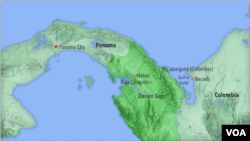The difficulty of obtaining U.S. visas and the economic aftershocks of China’s COVID lockdowns have led to a sharp increase in Chinese nationals presenting at the U.S.-Mexico border. Some of those arrivals have learned from social media websites and applications about how to make the long and dangerous journey, migrants, immigration experts, attorneys and current and former U.S. officials, told Reuters.
“Entering the United States at the southern border is an expensive and risky proposition. But if you have personal or economic reasons to do so, then it is a route is available to you,” said Erik Finch, director of immigration strategy at the Seattle, Washington-based legal tech startup Boundless Immigration and a former State Department official with experience in both China and Mexico. “And I think the fact that you're seeing an increasing number of people utilize that is a product of the general trend and also the fact that other routes have become even more impossible.”
Over the course of three weeks photographing and reporting from a remote border stretch in southeastern Texas, Reuters witnessed hundreds of Chinese migrants crossing into the United States and interviewed more than two dozen in Mandarin.
All of those interviewed said they got the idea to take the land route to the United States on social media and drew on influencers, private groups and comments to plan their trips.
About half said they had been small business owners in China, running online stores, a sheep farm and a movie production company.
Some wore crosses and carried Chinese-language bibles, saying they were Christians who felt they could not freely practice their religion at home. China’s constitution guarantees religious freedom, but in recent years critics, including the U.S. government, say Beijing has tightened restrictions on religions seen as a challenge to the authority of the ruling Communist party.
One migrant who asked after speaking with Reuters that their face not be shown said his route took them to Hong Kong, Thailand, Turkey before getting to Ecuador.
“I go to Hong Kong from Hubai first, then to Thailand from Hong Kong by plane, then Turkey from Thailand by plane, then Ecuador and up through South America to America here,” the migrant said.
The migrant said they were relieved when they arrived in the U.S.
“I feel relaxed. And I can breathe more comfortably. It’s rare. The people here, the police here, are very kind. And that’s the America in my head. That’s it. It’s good. It’s great,” the migrant said.
The Chinese Embassy in Washington said in an email that the government opposes illegal migration, which “is an international issue that requires cooperation between countries,” but did not respond to a request for comment on the issue of religious freedom.
Short video app Douyin, owned by TikTok owner ByteDance, is one of the main sources of the Chinese tech giant’s revenue overall, Reuters previously reported. ByteDance, which also owns Xigua Video, didn’t immediately respond to requests for comments.
Apprehensions of Chinese nationals at the U.S.-Mexican border reached more than 6,500 in the six months since October 2022, the highest on record and a more than 15-fold increase over the same period a year ago, according to U.S. Customs and Border Protection (CBP) data.
While just a sliver of the hundreds of thousands of migrants arriving at the southwest border, Chinese people were the fastest growing demographic in those six months, CBP data show.
In a March 16 tweet, CBP Chief Border Patrol Agent Gloria Chavez in the Rio Grande Valley sector that includes Fronton said the increase was “creating a strain on our workforce due to the complexities of the language barrier & lengthens the processing.”
Refusal rates among Chinese nationals for the most common U.S. visitor visas reached 80% in fiscal year 2021 and more than 30% in 2022, the two highest years on record, according to State Department data. While U.S. visa issuance globally has mostly recovered to pre-pandemic levels, the number of U.S. visas issued from China last year remained 90% below 2019’s pre-pandemic levels.
“Because of their zero-COVID policy, the actual impact of COVID extended past the point where a lot of the restrictions and things were more severe than in the rest of the world, and to the point where a lot of 2022 and late 2022 COVID, the COVID situation in China was at its most severe, and therefore that inhibited travel to and from China during that period, even after restrictions had been removed in most of the rest of the world,” said Finch, whose career at the State Department included overseeing various visa section services in China. “So I think just generally speaking, that impact was much amplified there. And it's stands to reason that they are experiencing issues like recovery and visa issuance is just one of the indicators of that.”
Visa holders and border crossers can request U.S. asylum on arrival if they fear persecution at home. Asylum seekers from China won in U.S. immigration court 58% of the time, according to U.S. Justice Department data.
The State Department in an emailed statement said 2021 and 2022 “were not standard years.” It said visa issuances were expected to increase as China “catches up on its passport backlog and air travel resumes after the end of the zero-COVID policy.”
Other Chinese nationals didn’t wait and chose to follow in the steps of others who learned via social media.
Scrolling through their social media feeds, one migrant came across “Baozai,” an internet personality who gained tens of thousands of followers on Douyin, Xigua Video, YouTube and Twitter by posting videos about his migration to the United States. Reuters was not able to independently confirm Baozai's identity and in messages to Reuters, he denied being an influencer and said he was just a migrant.
Baozai’s original account “Baozai adventure the world alone” is shown as “blocked” on Douyin for violating “community self-discipline regulations.”
He is now posting under a new account with the same name on Douyin, sticking to content about his life in the United States.
Douyin did not respond to a request for comment on Baozai.
The travel guide presented on social media matched descriptions given by clients to U.S.-based immigration attorney Xiaosheng Huang, who says he has represented 15 Chinese nationals who have made the trip to the U.S. via Ecuador since last summer.
“They start talking about getting out of the country on the social media, such as Doiyin, the Chinese version of Tik Tok and also Kuaishou and some other platforms. So they exchange the information: how to get out of the country, how to go to Ecuador, from Europe or Macao, Hong Kong,” said Huang, who added that most of his clients were leaving to look for a better life.
At a clinic in Quito one migrant told Reuters they found a group of Chinese migrants who had contacted a local Colombian guide known only by his first name, “Carlos.”
The migrant and several others said Carlos and his associates charged around $1,230 per adult and $700 per child to arrange travel and hotels from Ecuador to Panama including a guided trek through the Darien Gap.
Jungle tents and horses were also available for part of the trip for an extra fee, the migrants said.









































